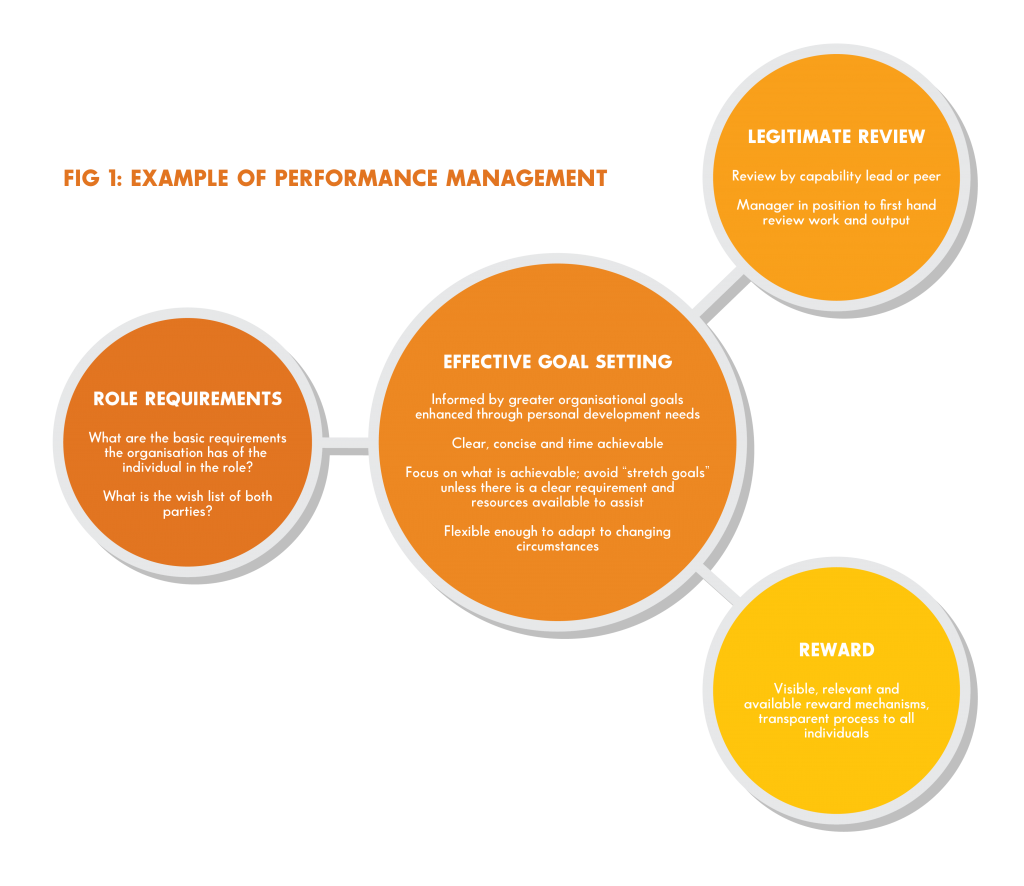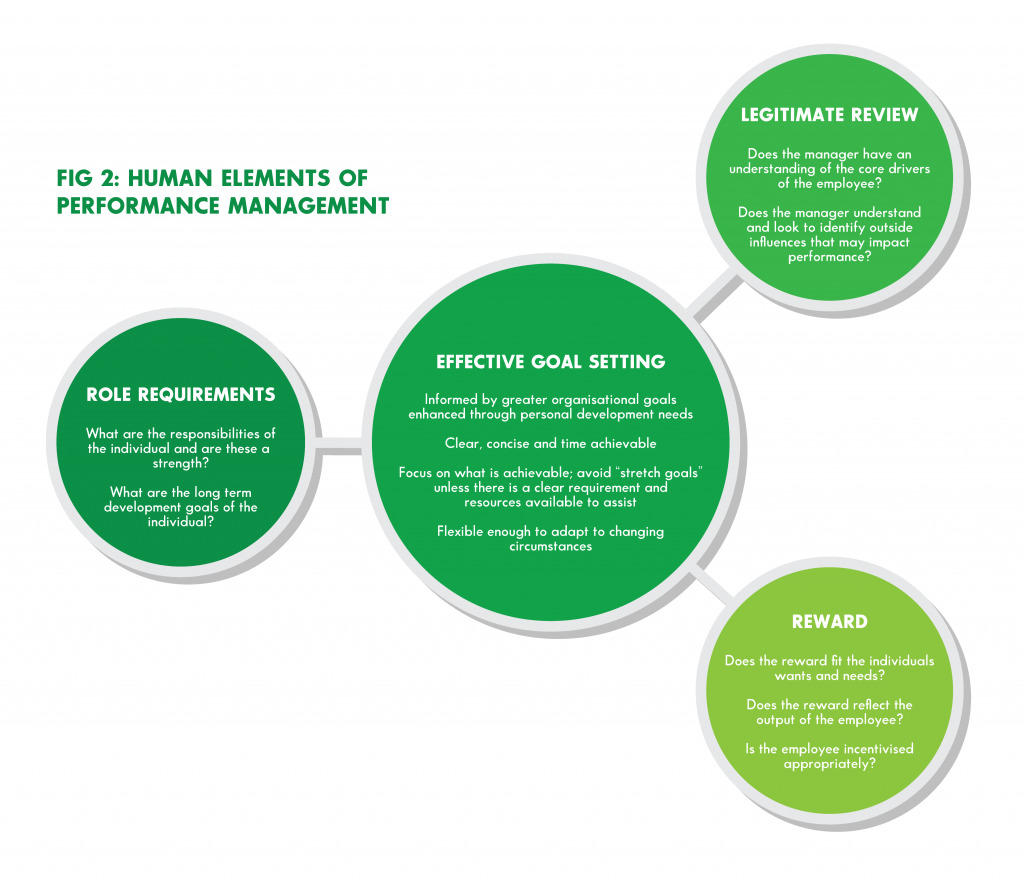
We have all heard it before: “An organization and its success are reliant upon its people”
But how true is this? Is an individual’s performance really key to the success of the larger business? Is an organization truly the sum of all of its parts? Do organizations do enough to effectively manage and measure the individual’s performance to be able to support this statement?
The success and growth of business has often been realized through enablers and influencers such as systems, markets and branding. This may be because such things are easily measured through performance indicators and metrics used to understand their efficiency and effectiveness.
However, with the notion that an organization’s success may in fact be reliant on its employees, these types of checks and measures also need to be appropriate to use in measuring an individual employee’s performance as well.
This is a reasonable approach, and certainly has been the accepted way of both managing underperformance and recognizing and rewarding success. However, somewhere along the way many organizations have forgotten that people exist in a very different cognitive state than databases, CRMs, HRISs, global branding success or an upturn in a certain market. While there is a requirement to not only set and monitor goals and responsibilities for all staff, there is also a need to recognize the unique way in which each of us operate and manage.
With this in mind, surely there is a missing element in the measure of an employee’s performance. Below is a diagram of a standard performance management framework and the required inputs (Role Requirements), processes (Legitimate Review) and outputs (Reward):

This diagram illustrates the basic elements, if designed and executed correctly that would make up a successful and effective performance management system.
Effective Goal Setting: This is undoubtedly core to a successful and effective performance management process. The defined goals and targets need to be in line with the organization’s aspirations, coupled with the individual’s desire for professional development. The goals set must also be soundly grounded in clear, concise language and direction, be achievable in a fair timeframe and be supported by the organization in resourcing and capability.
Role Requirements: These are simply the basic requirements that are inherent in the individual’s position. Be it a job description, position description or term of reference, the direction and required output of the individual should be clearly communicated and understood. These requirements – key inputs into the goal setting – should also reflect the needs of the organization.
Legitimate Review: The review process should be conducted by a manager or supervisor who has the capability and expertise in the employee’s field. They should be closely connected to the employee’s work and understand their required outputs. The review process should be conducted regularly and as required. It is not always sufficiently done on an annually or quarterly basis.
Reward: The rewards of exceeding performance goals should be visible and transparent to the employee at the time of goal setting. The rewards should be achievable and relevant to the required outputs whilst staying in line with organizational policy.
The key to all of these elements, indicative of an efficient Performance Management Framework, is effective communication. This is the human element which is lacking in today’s approach to performance management – the part that understands human uniqueness – the part that should be regarded as the most important element of managing an employee’s workload and performance.
Just as goal setting is the core of performance management, conversations with clear and direct communication and understanding is at the core of effectively managing performance. Too much of the required empathy for individuals is lost in a mandraulic and system based administratively heavy performance management process which is unfortunately the norm today.
People work best when they feel inspired, included, challenged and ultimately incentivized. The way a manager and an organization can foster this is through introducing this type of human approach to performance management.
Below is a representation of how the same basic performance management process shown above would be enhanced through the addition of open communication and a more human approach.

Effective Goal Setting: While goal setting remains key to the process, the goals become more effective when a true understanding of the individual’s goals are set. This is done through open communication that illustrates the true benefits to both the employee and organization of realizing the goals.
Role Requirements: With clear communication, the role requirements are more clearly understood by the individual and the manager and can better assist in helping the employee reach their long term career aspirations. Through better understanding the employee’s capabilities it is easy to identify strengths and areas of development when assessing them against the expected outputs of the role.
Legitimate Review: The humanized version of this element now encompasses the employee as a person rather than an enabler or influencer. The manager should have an understanding of what the employee’s personal and professional drivers are, how they could best utilize the performance management process to realize these and how to track them against required outputs. Similarly through understanding the employee as a person, the manager will gain insight into any possible external influences or impacts which could derail the employee’s performance and act to support them appropriately.
Rewards: Tailored toward the individual employee and where they are placed on the career continuum. The rewards reflect what is most likely to drive an employee to succeed and feel incentivized which will ultimately lead to a more effective output and result. An individual who has a clear understanding of what benefits are available to them through strong performance will strive to meet the goals set.
All of these elements, still representative of a successful performance management process, now reflect a deeper understanding of the employee. It embeds their needs, wants and drivers into the process and seeks to define the employee’s responsibilities, set the required goals, manage and review the employee through the process and incentivize them appropriately.
Whilst we are probably years, perhaps decades from a truly paperless/administrative negligible performance management review process, organizations can start the process right now to improve the experience and tighten the effectiveness of the performance processes through embedding basic human understanding and approaches into previously rigid management structures.






